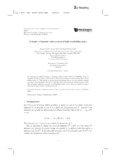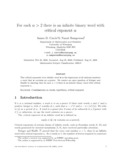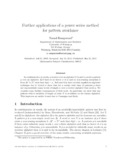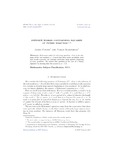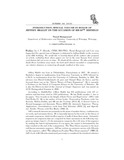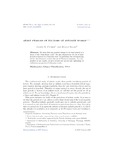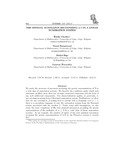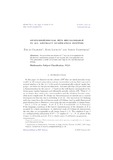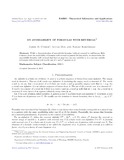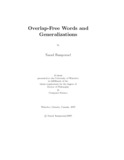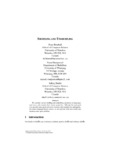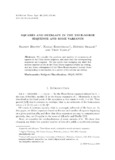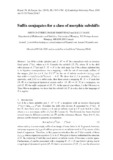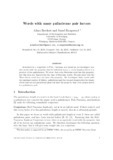Browsing Narad Rampersad by Title
Now showing items 8-21 of 21
-
A family of formulas with reversal of high avoidability index
(World Scientific, 2017)We present an infinite family of formulas with reversal whose avoidability index is bounded between 4 and 5, and we show that several members of the family have avoidability index 5. This family is particularly interesting ... -
For each a > 2 there is an Infinite Binary Word with Critical Exponent a
(The Electronic Journal of Combinatorics, 2008-08-31)The critical exponent of an infinite word w is the supremum of all rational numbers α such that w contains an α-power. We resolve an open question of Krieger and Shallit by showing that for each α>2 there is an infinite ... -
Further applications of a power series method for pattern avoidance
(The Electronic Journal of Combinatorics, 2011-06-21)In combinatorics on words, a word w over an alphabet ∑ is said to avoid a pattern p over an alphabet ∆ if there is no factor x of w and no non-erasing morphism h from ∆* to ∑* such that h(p) = x. Bell and Goh have recently ... -
Infinite words containing squares at every position
(EDP Sciences, 2010)Richomme asked the following question: what is the infimum of the real numbers α > 2 such that there exists an infinite word that avoids α-powers but contains arbitrarily large squares beginning at every position? We resolve ... -
Least Periods of Factors of Infinite Words
(EDP Sciences, 2009)We show that any positive integer is the least period of a factor of the Thue-Morse word. We also characterize the set of least periods of factors of a Sturmian word. In particular, the corresponding set for the Fibonacci ... -
The minimal automaton recognizing mN in a linear numeration system
(Integers, 2011-12-02)We study the structure of automata accepting the greedy representations of N in a wide class of numeration systems. We describe the conditions under which such automata can have more than one strongly connected component ... -
Multi-dimensional sets recognizable in all abstract numeration systems
(EDP Sciences, 2011)We prove that the subsets of Nd that are S-recognizable for all abstract numeration systems S are exactly the 1-recognizable sets. This generalizes a result of Lecomte and Rigo in the one-dimensional setting. -
On avoidability of formulas with reversal
(EDP Sciences, 2018-02-13)While a characterization of unavoidable formulas (without reversal) is well-known, little is known about the avoidability of formulas with reversal in general. In this article, we characterize the unavoidable formulas ... -
Overlap-Free Words and Generalizations
(University of WinnipegUniversity of Waterloo, 2007)The study of combinatorics on words dates back at least to the beginning of the 20th century and the work of Axel Thue. Thue was the first to give an example of an infinite word over a three letter alphabet that contains ... -
Shuffling and unshuffling
(Bulletin of the European Association for Theoretical Computer Science, 2012)We consider various shuffling and unshuffling operations on languages and words, and examine their closure properties. Although the main goal is to provide some good and novel exercises and examples for undergraduate formal ... -
Squares and overlaps in the Thue-Morse sequence and some variants
(EDP Sciences, 2006)We consider the position and number of occurrences of squares in the Thue-Morse sequence, and show that the corresponding sequences are 2-regular. We also prove that changing any finite but nonzero number of bits in the ... -
Suffix conjugates for a class of morphic subshifts
(Cambridge University Press, 2015-09)Let A be a finite alphabet and f: A^* --> A^* be a morphism with an iterative fixed point f^\omega(\alpha), where \alpha{} is in A. Consider the subshift (X, T), where X is the shift orbit closure of f^\omega(\alpha) and ... -
Words with many palindrome pair factors
(The Electronic Journal of Combinatorics, 2015-10-30)Motivated by a conjecture of Frid, Puzynina, and Zamboni, we investigate infinite words with the property that for infinitely many n, every length-n factor is a product of two palindromes. We show that every Sturmian word ...

